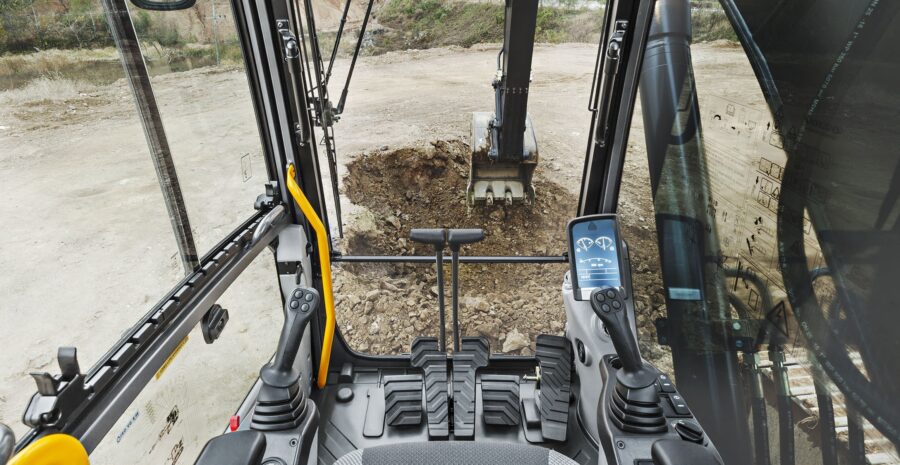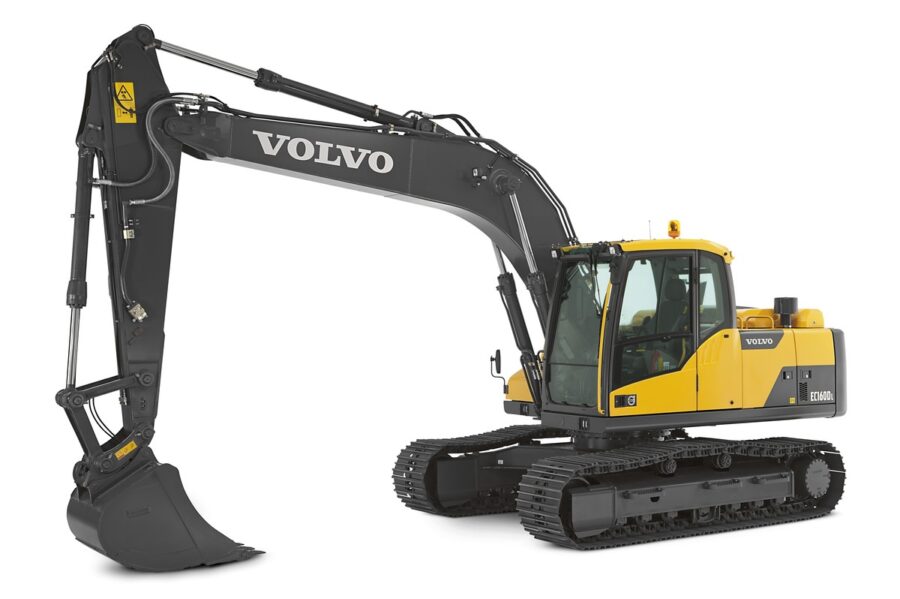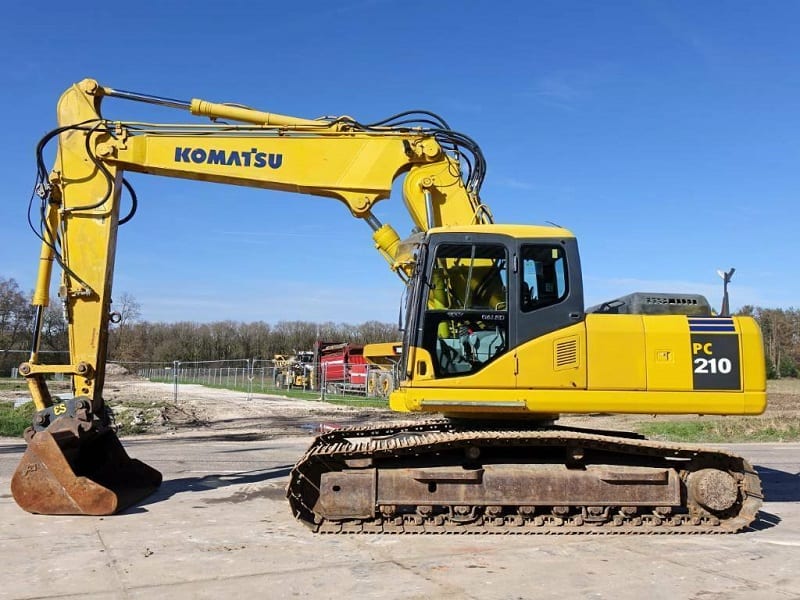Excavators play a vital role in construction, mining, and other heavy-duty tasks. Choosing the right brand can impact productivity, fuel efficiency, and overall cost. Among the industry leaders, Caterpillar, Komatsu, and Volvo stand out as the top contenders. In this showdown, we’ll compare their excavators across several key categories to help you decide which is the best fit for your needs.
Brand Overview
Caterpillar (CAT)
Caterpillar Inc., based in the USA, is one of the most recognizable names in heavy machinery. Known for its rugged build quality and massive dealer network, CAT is a preferred choice for many large-scale operations worldwide.

Komatsu
Founded in Japan, Komatsu is the world’s second-largest construction equipment manufacturer. It is renowned for its reliability, advanced technology, and consistent innovation in the excavator space.
Volvo Construction Equipment
Volvo CE, headquartered in Sweden, brings a unique approach by focusing heavily on operator comfort and environmental sustainability. Their machines are known for intuitive controls, fuel efficiency, and low emissions.
| Brand | Headquarters | Founded | Known For |
|---|---|---|---|
| Caterpillar | USA | 1925 | Durability, Dealer Support, Power |
| Komatsu | Japan | 1921 | Technology, Reliability, Fuel Efficiency |
| Volvo | Sweden | 1832 | Operator Comfort, Eco-Friendly Design |
Performance and Power
When it comes to performance, excavators are judged based on metrics like engine power, digging depth, operating weight, and lifting capacity. Let’s take a look at some flagship models from each brand: the CAT 320, Komatsu PC210-11, and Volvo EC220E.
| Model | Engine Power (HP) | Operating Weight (tons) | Max Digging Depth (ft) | Max Lifting Capacity (lbs) |
|---|---|---|---|---|
| CAT 320 | 162 | 22.5 | 22.1 | 20,000 |
| Komatsu PC210-11 | 165 | 23.5 | 21.7 | 19,800 |
| Volvo EC220E | 173 | 24.3 | 22.6 | 20,500 |
All three excavators are close in specs, but the Volvo EC220E offers slightly more horsepower and digging depth. However, the CAT 320 maintains a strong balance between power and versatility, while the Komatsu PC210-11 is known for smooth hydraulics and fuel efficiency.
These machines are commonly used for medium to large construction projects, and each excels in different working conditions. The choice often comes down to specific job site needs and operator preference.
Technology and Innovation
Modern excavators go far beyond brute force. They are equipped with intelligent systems that boost productivity, safety, and efficiency. Let’s compare the technological innovations in Caterpillar, Komatsu, and Volvo machines.
| Feature | Caterpillar 320 | Komatsu PC210-11 | Volvo EC220E |
|---|---|---|---|
| Grade Control System | CAT Grade with 2D/3D Assist | Komatsu Intelligent Machine Control | Volvo Dig Assist |
| Telematics | CAT Product Link | KOMTRAX | Volvo CareTrack |
| Automation Features | Semi-autonomous digging | Auto blade & boom control | In-field design & real-time adjustments |
| Fuel Efficiency System | Smart Mode with Eco-Switch | Auto-idle & Economy Modes | Eco Mode with Load Sensing Hydraulics |
Caterpillar offers powerful machine control and remote tracking, making it ideal for high-volume jobs. Komatsu focuses on deep integration of automation, which reduces the skill gap for new operators. Volvo combines digital precision with user-friendly interfaces, tailored for both efficiency and comfort.

These innovations not only increase productivity but also reduce operating costs and improve jobsite safety. For tech-savvy operations, all three offer competitive systems, but each has a unique edge depending on your priorities.
Operator Comfort and Safety
Excavator operators often spend long hours in the cab, so comfort and safety aren’t luxuries—they’re essential. Each brand has made strides in creating ergonomic, safe, and user-friendly environments for operators.
| Feature | Caterpillar 320 | Komatsu PC210-11 | Volvo EC220E |
|---|---|---|---|
| Cab Comfort | Pressurized cab with adjustable seat and 10-inch touchscreen | Air suspension seat, wide cab, low noise | High-visibility cab, air-filtered climate control |
| Visibility | 360-degree camera and rearview monitor | Wide front glass and rear camera | Volvo Smart View (bird’s-eye system) |
| Control Interface | Joystick customization and touchscreen menus | Intuitive controls with multi-language display | Simplified navigation with multi-function joystick |
| Safety Features | ROPS cab, automatic brake, travel alarm | Anti-drop valves, seatbelt alarm, rearview camera | Emergency exits, proximity warning system |
The Caterpillar 320 excels in cab tech and custom control setups. Komatsu focuses on quiet operation and a smooth, stable feel. Volvo stands out for superior all-around visibility and a proactive approach to operator health and safety.
Ultimately, all three machines provide high levels of comfort and protection. The choice depends on the operator’s preferences—whether they prioritize cabin tech, silence, or panoramic visibility.
Durability and Maintenance
Excavators are long-term investments, so durability and ease of maintenance are key concerns. A reliable machine with good support and simple servicing can save thousands over its lifespan.
| Feature | Caterpillar 320 | Komatsu PC210-11 | Volvo EC220E |
|---|---|---|---|
| Build Quality | Heavy-duty steel, reinforced boom & stick | Welded structures with high-tensile steel | Cast steel components and wear-resistant joints |
| Service Access | Grouped ground-level service points | Easy-open panels and centralized filters | Wide-opening hoods, ladder access |
| Maintenance Intervals | 500-hour engine oil and filter changes | 500-hour intervals with extended-life fluids | 1000-hour hydraulic oil intervals |
| Parts & Support | Extensive global dealer network | Strong regional support in Asia and beyond | Responsive European and global support |
Caterpillar shines in worldwide support and robust design. Komatsu machines are reliable and known for requiring minimal maintenance downtime. Volvo stands out for long service intervals and thoughtful design that simplifies routine checks.

If uptime and global support are top priorities, CAT might be the best choice. For low-maintenance, dependable performance, Komatsu has the edge. Volvo offers premium design with reduced service frequency—great for cost-saving over time.
Cost and Value
Cost is more than just the sticker price—it’s about long-term value. A good excavator balances purchase cost, fuel efficiency, maintenance, and resale value. Here’s how our three competitors compare financially.
| Model | Estimated Purchase Price (USD) | Fuel Consumption (gal/hr) | Avg Annual Maintenance Cost | Resale Value After 5 Years |
|---|---|---|---|---|
| Caterpillar 320 | $230,000 | 4.5 | $8,000 | ~60% |
| Komatsu PC210-11 | $215,000 | 4.2 | $7,500 | ~55% |
| Volvo EC220E | $225,000 | 4.0 | $7,800 | ~58% |
The Komatsu PC210-11 has the lowest purchase price and good fuel economy, making it attractive for budget-conscious buyers. Volvo offers the best fuel efficiency, which helps reduce operational costs over time. Caterpillar has the highest resale value, which can offset its higher initial cost.

For those planning to run machines hard and resell later, CAT may provide the best return. If you’re optimizing for operating costs, Volvo might be the winner. And for a solid all-around performer with lower upfront cost, Komatsu makes a strong case.
User Reviews and Field Feedback
Real-world feedback often reveals what spec sheets can’t. Operators and contractors who use these machines daily provide valuable insights into their strengths and weaknesses in the field.
Caterpillar: CAT excavators are often praised for their raw power and reliability under pressure. Many users highlight the smooth hydraulics, comfortable cab, and exceptional service network. However, some mention that parts and maintenance through CAT’s dealers can be more expensive than competitors.
Komatsu: Operators like Komatsu for its intuitive controls and quiet, stable operation. The machine is considered beginner-friendly, thanks to its advanced automation features and responsive systems. Some users note that Komatsu can be slightly slower in aggressive digging situations compared to CAT.
Volvo: Volvo receives high marks for operator comfort, especially in long shifts. The visibility, low noise levels, and easy-to-use tech make it a favorite in urban or tight-jobsite settings. A few users mention that while the machine is fuel-efficient and precise, it’s not always the best choice for high-intensity excavation in rocky conditions.
Preferences vary by region: North American contractors often lean toward CAT due to dealer availability. In Asia and parts of Europe, Komatsu is seen as the go-to workhorse. Volvo enjoys a strong reputation in Europe and among environmentally conscious operations.
Overall, feedback reflects the personalities of the machines: CAT is tough and powerful, Komatsu is smart and steady, and Volvo is smooth and refined.

